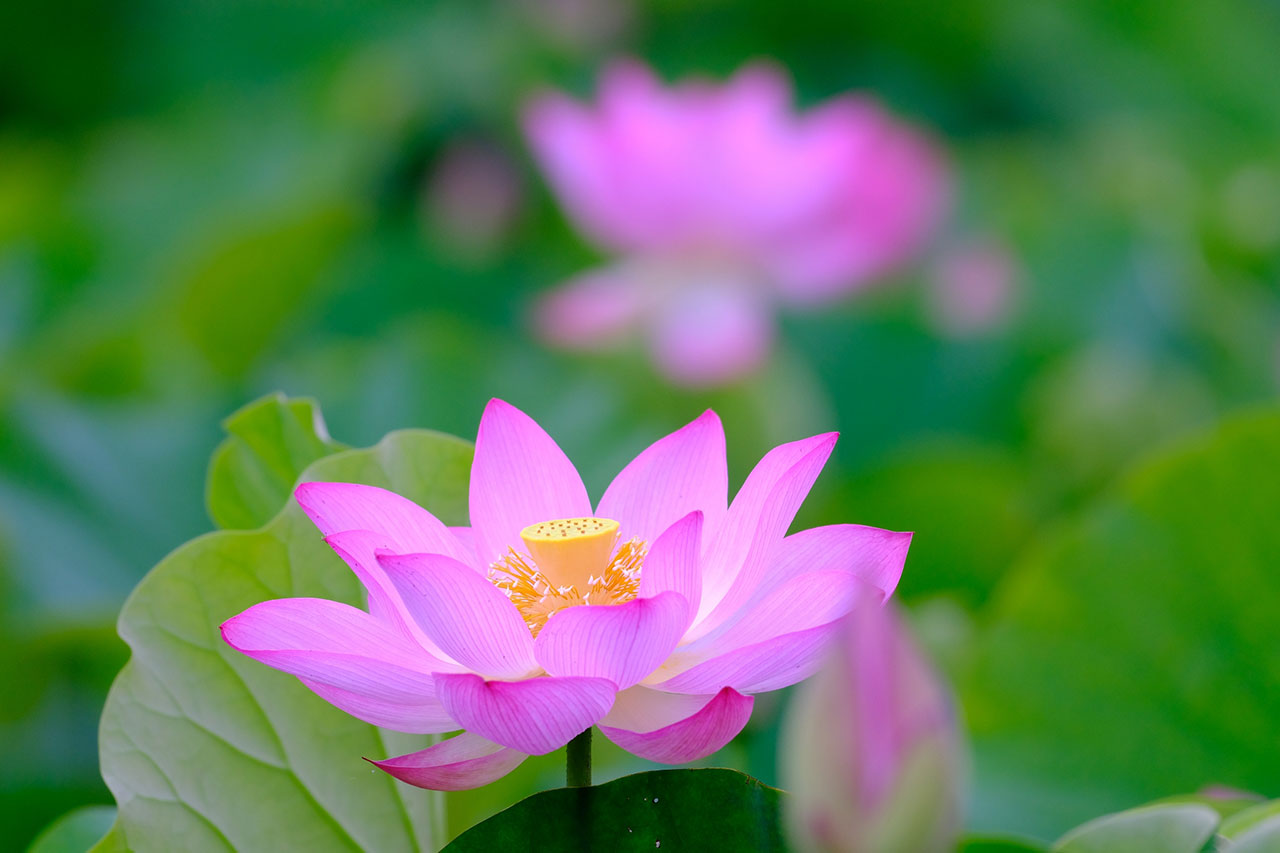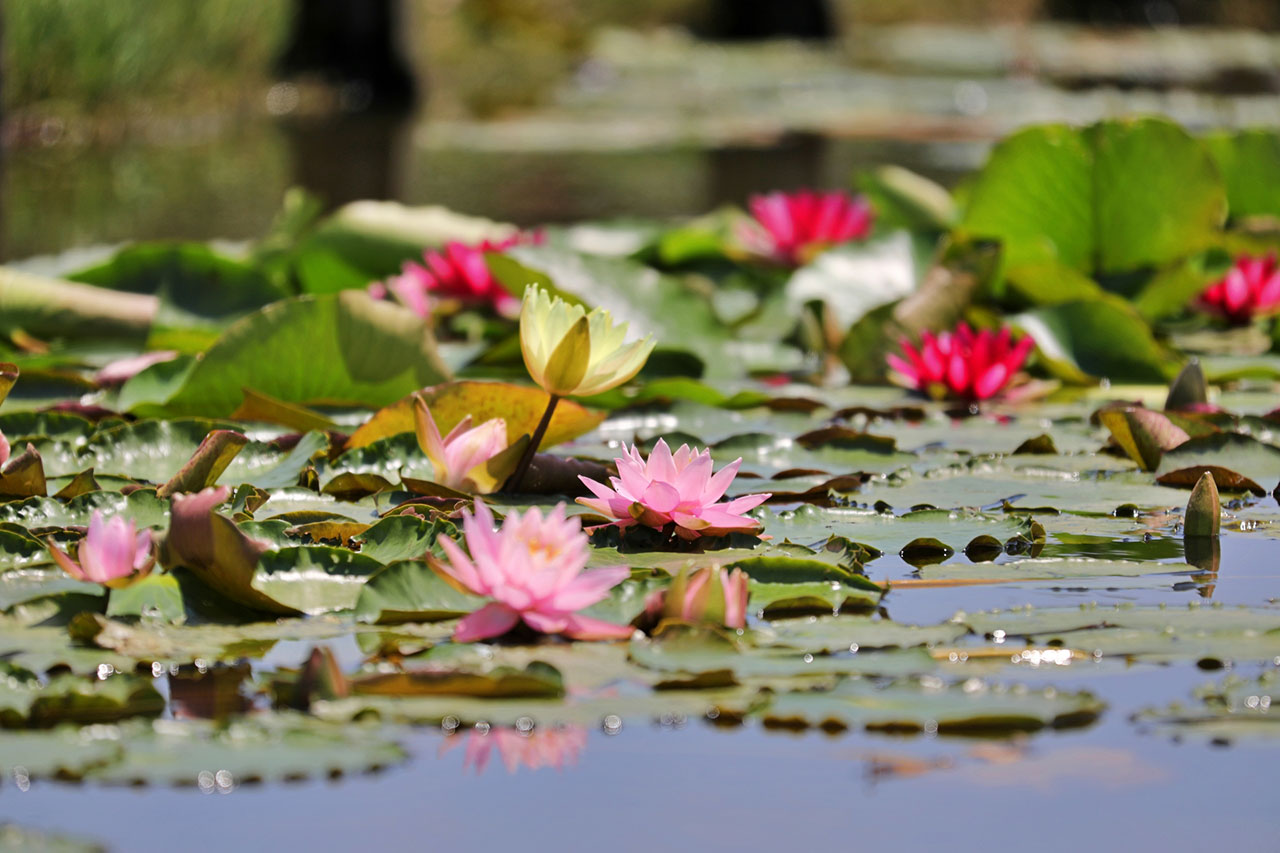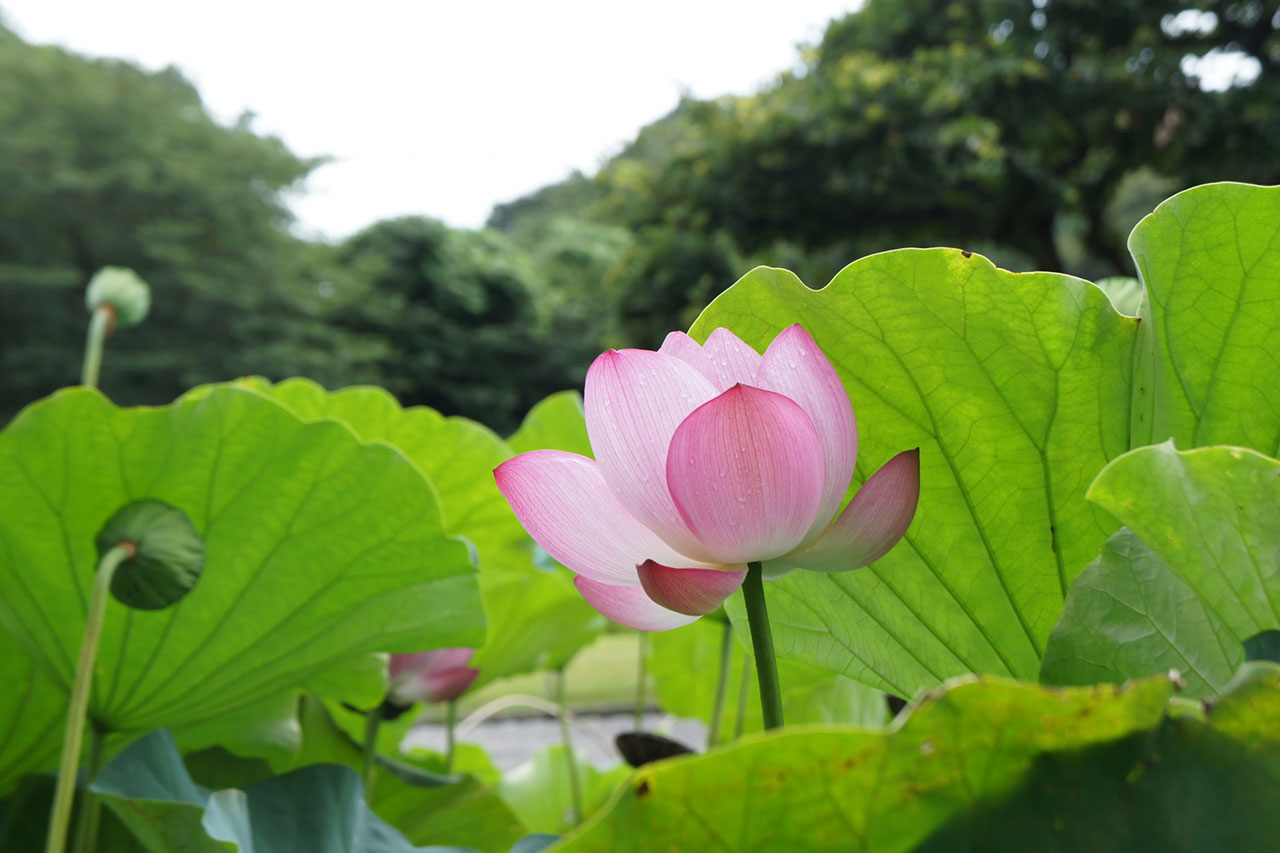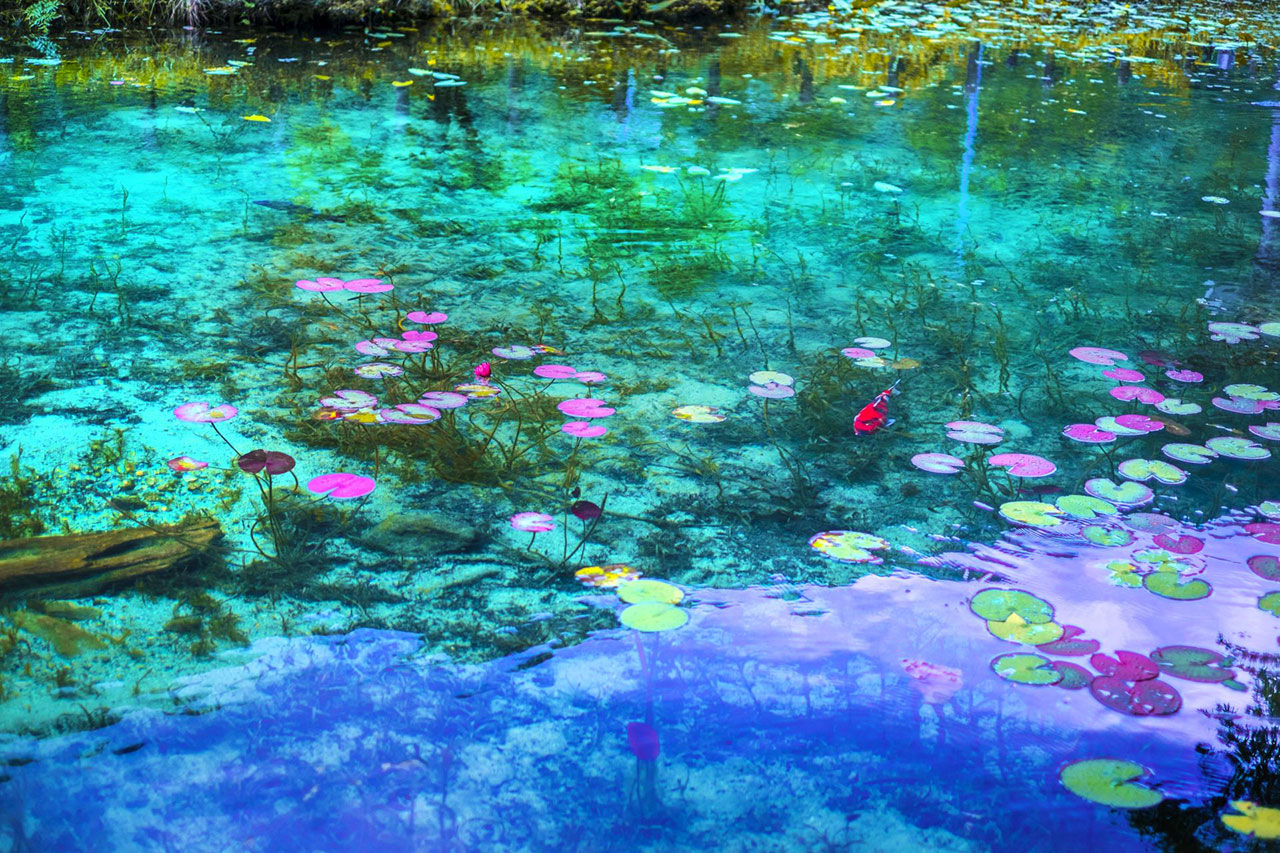August: Water Lilies and Lotus Flowers
July 29, 2021

Floating peacefully on the water’s surface with delicate peaked petals, water lilies and lotus plants can be easily confused. While there are many similarities, the two flowering aquatic plants actually derive from different families, and have a few tell-tale signs to help the casual plant-spotter identify them.
Water lilies are from the Nymphaeaceae family and have variegated leaves with distinctive cuts through them. Lotus plants, on the other hand, are from the Nelumbonaceae family and have simple single-colored leaves that are fully round. The most interesting difference, however, is in the famous flowers. While water lily flowers float on the surface alongside the leaves, the flowers of a lotus will sit up to 60 cm above the water, closing in the evening and opening every morning, fresh and bright.
This unusual trait has led to the lotus becoming one of the most significant symbols across the world, from ancient Egypt to the Buddhism practiced today. With extensive roots buried deep in mud, the flower’s daily emergence is a sign of our ability to emerge from dark times and rise above the challenges of life. With some seeds able to withstand thousands of years without water, the hope encapsulated in the plant’s ability to emerge from struggle is inspiring.

Karako Wetlands Park, Nagasaki (Google Maps)
Deeply connected to rebirth and enlightenment, the flower is depicted across spiritual practice, from yoga positions to Buddhas statues to famous sutras. In Japan, where many people follow elements of Buddhist practice on a daily basis, the lotus is particularly revered. In the Tendai and Nichiren sects of Buddhism, the Lotus Sutra, detailing the potential for the attainment of perfect enlightenment is held as the quintessence of truth.
In a more practical approach, the roots of a lotus plant are a delicacy in Japanese cuisine. Renkon is light and crunchy making it perfect for kinpira (stir fried with soy sauce), tempura or in soups, sliced into rounds to show off the unusual holes that run through the root. The lotus seeds—known as makhana in many countries—are valued for their antioxidant properties while the subtle lotus fragrance is popular around the world.

Sankeien Garden, Yokohama (Google Maps)
Many people may have only seen lotus flowers in ponds during the day, but the keenest of viewers will arrive long before the sunrise. Known as Kanrensetsu, lotus flower viewing holds the pleasure of watching the flowers emerge from the muddied water and open, bright and pure to the morning’s sun. Special viewing sessions take place at gardens across Japan including Okayama Korakuen which opens its gates at 4 a.m. during flowering season.
In Nagasaki, the Lotus Garden in Karako Wetlands Park is located in Moriyama, around an hour from Nagasaki City. Blooming from mid-June to mid-July, there are 13 varieties of lotus and water lily with Karako Lotus Festival celebrating the flowers in early July. The region is known for its international mix as it was the only foreign port in Japan for many years, with Shippoku Ryori, the local cuisine, combining Japanese food with Dutch, Chinese and Portuguese influences. Visit Nagasaki’s Dutch Slope to see western-style buildings and take a trip to the abandoned Hashima Island, also known as Gunkanjima—used as the inspiration for scenes in the James Bond movie Skyfall.

Monet’s Pond, Gifu (Google Maps)
Closer to Tokyo, the ponds at Sankeien Garden in Yokohama are filled with blooming lotus plants and water lilies. Early morning viewing is available from 6 a.m. on weekends from mid-July to early August. Another historic port town, Yokohama has a fantastic China Town and evening illuminations at Minato Mirai which might make the 6 a.m. start a little harder than planned.
The top destination in Japan for water lily viewing, however, has to be the magical Monet’s Pond in Gifu Prefecture. Truly painting-like, the clear waters contain water lilies and koi in a transfixing recreation of the world-famous masterpiece. The pond is found beside Nemichi Shrine in Seki, close to Nagoya City. Other popular destinations include Hamanako Garden Park in Shizuoka, Garden Museum Hiei in Kyoto and the Otsuka Museum of Art in Tokushima. Wherever you enjoy Japan’s lotus plants and water lilies, you’ll be sure to be inspired by their renewal and delicate perseverance.
For more details, contact DMC Japan to discuss ideas, locations and rates.
Contact Us


